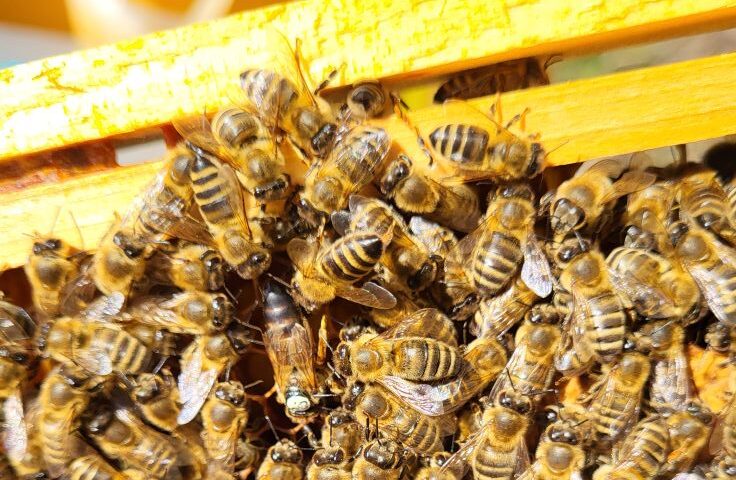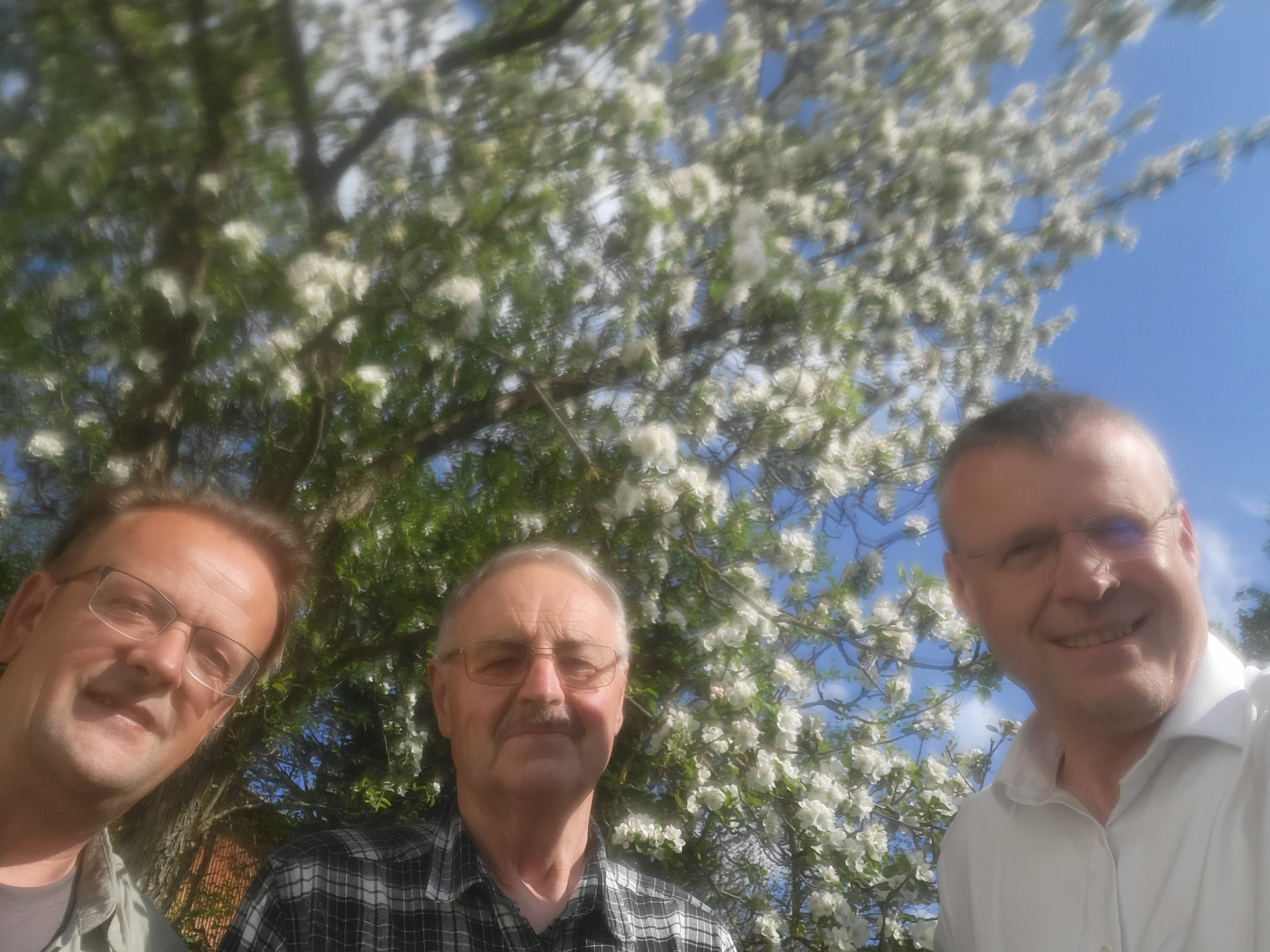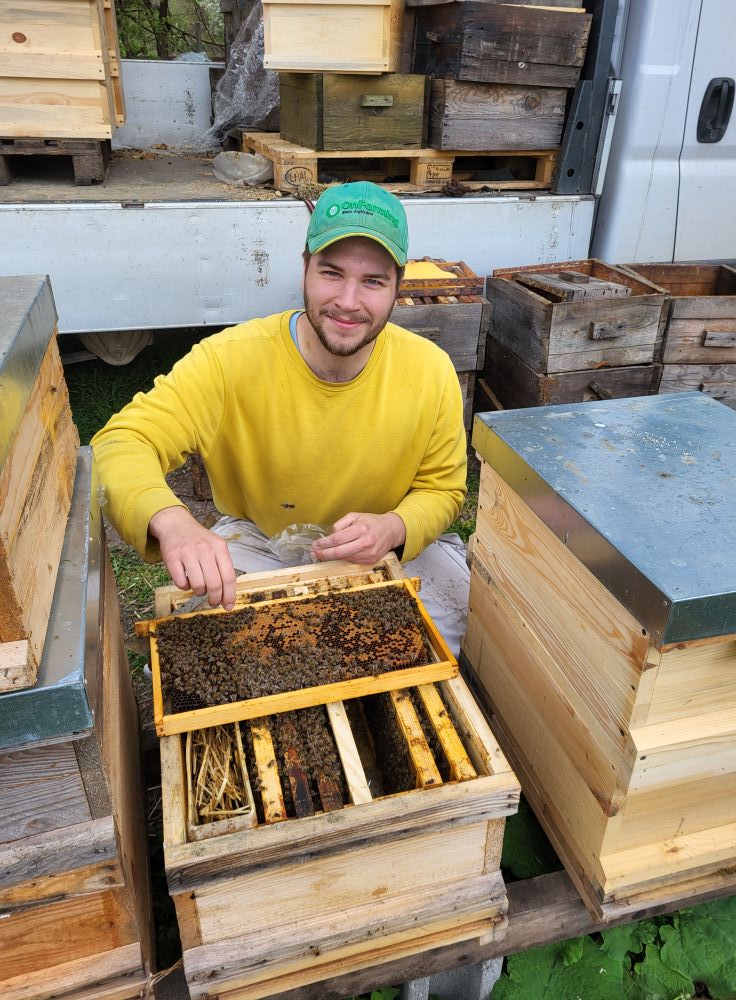SelectBees 2.0
Research project: Selection of Austrian Carnica bees for Varroa
resistance 2.0
Research project: Selection of Austrian Carnica bees for Varroa
resistance 2.0
Funded by: FFG – Österreichische Forschungsförderungsgesellschaft
Project duration: 2025 to 2028
Project volume: EUR 450,000.00
Project partner:
The SelectBees2.0 project aims to filter the allele frequencies of resistance strains within the Austrian Apis Mellifera Carnica population by means of artificial selection using state-of-the-art breeding techniques (single drone insemination, phenotype recording in test colonies, artificial infection with Varroa mites) and molecular genetic methods such as NGS genome sequencing and to increase them through specific breeding programs.
Molecular genetic analyses based on experimental breeding trials with standardized testing should be used to identify genomic regions or genetic markers that correlate with resistance traits and can therefore be used in marker-assisted selection programs. The cooperation project is being carried out at Austria’s largest beekeeping operation (approx. 12,000 colonies). While other international resistance breeding programs rely on the crossbreeding of foreign bee subspecies (e.g. Russian Primorski or Kenyan highland bee), this project aims to strengthen existing resistance systems within the autochthonous Carnica bee in Austria in order to carry out sustainable conservation breeding of a subspecies adapted to Austrian climatic conditions.
The general aim of this research project is to find and filter out traits and carriers of Varroa resistance within the Austrian Carnica population in order to consolidate them within an accelerated breeding and testing program and to increase the frequency of resistance plants.
The SelectBees2.0 research and development project, which will run for three years, can generally be divided into three areas:

includes all practical breeding work relating to single drone insemination (SDI) and further breeding of selectively mated queens, including mating on mating sites with SDI-selected drone colonies.
includes the performance testing of SDI-selected whole colonies as well as the comparative performance testing of pre-selected whole colonies from specialized breeding farms and reference colonies from national breeding.
revolves around the sampling and genotyping/sequencing of selected test colonies or selected breeding queens. Samples, DNA and sequence or genotype data will be archived accordingly, the genotype data will be used for genome-wide association analyses to identify possible markers associated with resistance or to statistically evaluate previously known regions with test data.
The topic of varroa resistance breeding has been the focus of both scientific and practical attention in Europe for the last 10 years and is mainly carried out on the basis of open breeding books (Buckfast, crossbreeding of foreign breeds with trait systems). In Germany, the German Beekeepers’ Association (DIB) announced the Varroa 2033 program in 2023 with the aim of getting the Varroa problem under control by 2033. This program is essentially based on two pillars a) the nationwide implementation of biotechnical anti-varroa measures to move away from chemical and pharmacological treatments and b) breeding measures to increase and consolidate resistance traits in individual subpopulations in Germany.
This three-year project lays the foundation for successful, technically state-of-the-art and systematically scientifically supported breeding work. Through the selection experiments, an increase in the frequency of Varroa resistance traits and the formation of resistant breeding lines can be guaranteed to a certain extent. Subsequently, it will be necessary to further consolidate the breeding progress achieved and to place resistance systems on a broader genetic basis. To this end, several VSH/SMR breeding sites developed in the project will be used to make the breeding progress accessible to the broader breeding and beekeeping community in the longer term.

